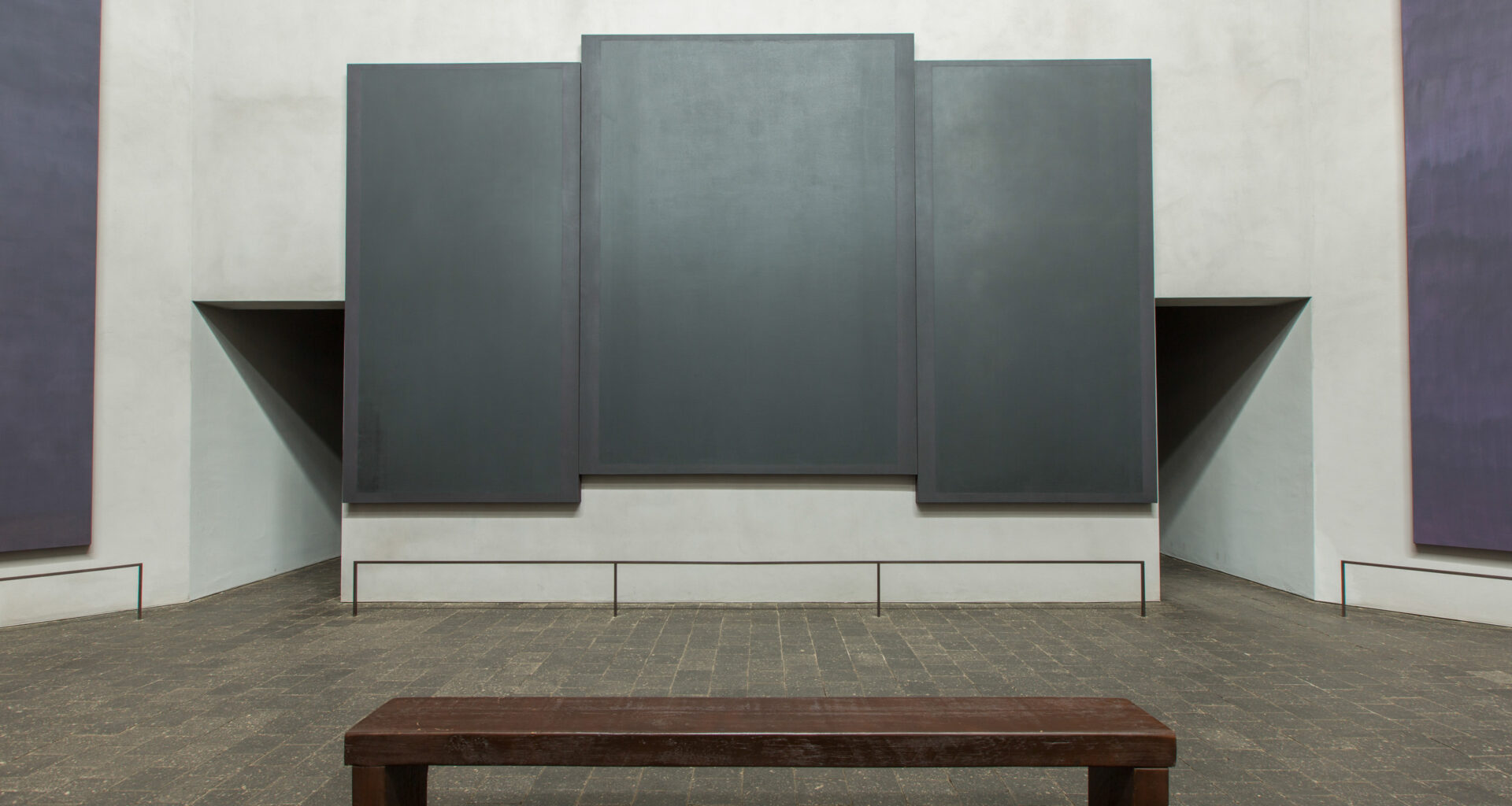An Inner Sanctum & Intersection for Art, Spirituality and Social Justice, Rothko Chapel Aspires to the Highest Levels of Humanity
His Holiness the Dalai Lama, Desmond Tutu, and Nelson Mandela are towering figures in any context, but at Rothko Chapel, these crusaders of social justice and their work to advance human rights reverberate with both poignancy and uplift within the modern artworked walls of the Houston, Texas, institution.
And though Rev. Dr. Martin Luther King Jr. was slain a few years prior to Rothko Chapel’s opening in 1971, his memory looms particularly large here, embodied in the Barnett Newman sculpture outside its entrance, “Broken Obelisk,” which is dedicated to the legacy of the civil rights icon and his clarion call for equality.
That the octagonal Rothko Chapel is both poetic (like prayer itself) and platform (a place for addressing global issues of the day) is first a credit to its founders, philanthropists John and Dominque de Menil (of The Menil Collection, also in Houston), who smartly commissioned an artist to create it—prophet of abstract expressionism, Mark Rothko.
“Rothko’s goal was to create a space that was essentially a blank slate so that each individual person can come into and have a unique, personal experience”
Caitlin Ferrell of Rothko Chapel
“With this in mind, I think that the space and the paintings are sacred to different people in different ways.”
There are 14 site-specific paintings in all—three triptychs painted a striking black and blended with other hues and five walls of single paintings.
“We consider the whole structure—art, architecture, building—a complete work of art,” says Caitlin Ferrell.
Observed as such “it creates a spiritual and contemplative environment,” she adds. It is reported that Rothko’s ideas for the project clashed with that of original architect Philip Johnson, who envisioned more monumentality than Rothko’s want of a meditative space that would not distract from the art. Rothko went through a few more architects in his quest for perfection.
Of note, in 2001 Rothko Chapel was added to the National Register of Historic Places, more than two decades shy of being open 50 years. This speaks volumes to the Rothko Chapel’s significance beyond the nonphysical realm.
Oriented toward the tenets of the arts, spirituality, and human rights—the space is truly open; in architectural terms, expansively, and literally, to all people, of all faiths, every day of the year. Public programming supports its advocacy and education and also provides opportunities for one to experience an array of spiritual traditions through meditative practices, interfaith conversations, and immersive artistic experiences.
New construction projects will include a Visitor Welcome House to better serve the Rothko Chapel’s growing numbers of international guests—over 100,000 visitors from more than 110 countries are received annually, according to Caitlin Ferrell. Not all are spiritually inclined—many are art lovers on a pilgrimage of another sort.
“We fall into the same vein of immersive, spiritual art experiences as places like the Matisse Chapel in Vence, France, and the Le Corbusier’s Ronchamp Chapel, in France, both of which were inspirations for the de Menil’s in the creation of the Rothko Chapel.”
All are examples of the highest form of artistic collaboration.
Rothko Chapel
Photograph: Courtesy of Runaway Productions and Hickey-Robertson







